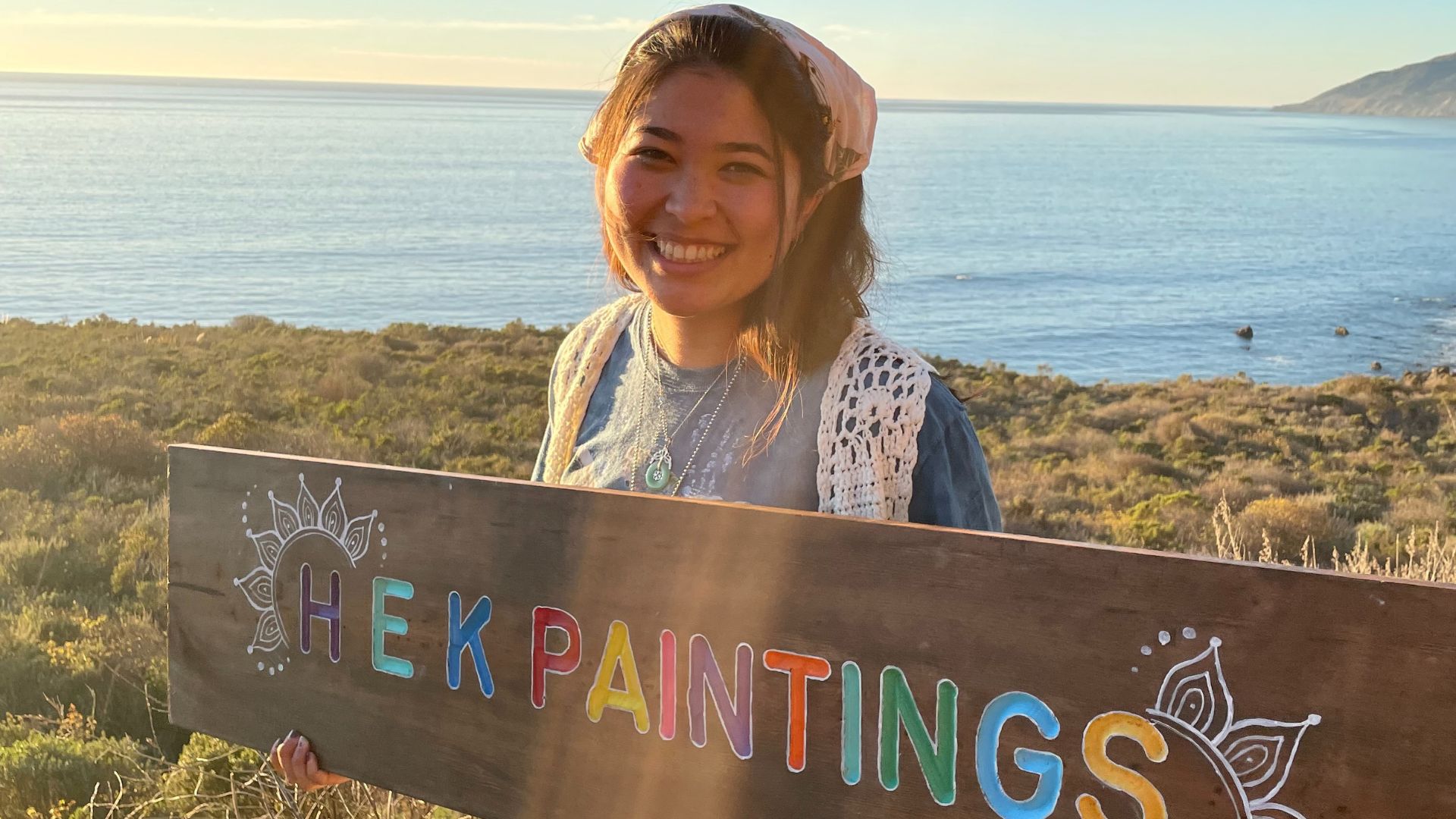A graduating senior combines science and art in a symbiotic practice

Hannah Kim
December 19, 2022
By Marielle Argueza
There were several guiding forces that shaped CSU Monterey Bay senior Hannah Kim’s academic trajectory. Kim, who is about to graduate with degrees in both marine science and visual art, was influenced by her early experiences selling various goods with her mother at swap meets at La Mirada, California. And despite living in a heavily urban environment, she gained a keen interest in animals through her uncle and father who ran a reptile store.
Later on in her life, those experiences gave her the confidence to interact in and build communities wherever she went. And it also built in her a sense of entrepreneurship, raising money for her mother’s cancer treatments by selling her art.
Early exposure to the natural world, despite being confined in a retail setting, also piqued her fascination with all kinds of living creatures.
“I grew up looking at scaly creatures. I love animals,” Kim said.
But like many first-generation college students, Kim wasn’t sure about what she could do with all her interests, and when she first attended CSUMB she initially declared just as a marine science major. It was only later, when she was acquainted with the support staff and resources of the Undergraduate Research Opportunities Center (UROC), that she decided she could both be an artist and a scientist.
Eric Barajas, an outreach specialist for UROC, can understand the initial hesitation.
“When you have first-generation students, or children of immigrants, they’re typically just pushed into these jobs of prestige — becoming medical doctors and lawyers. Very rarely do they feel they have the freedom to explore different spaces, like research,” Barajas said.
At UROC, Kim jumped headlong into her work, which included two different labs, meeting mentors (who later became the biggest champions of her work), and taking advantage of writing and scholarship workshops. She flourished.
“People forget that research isn’t just for science, it spans the humanities, too,” said Barajs.
Another of her mentors says Kim is a rare kind of student.
“She is probably in the top 1% who is intrinsically motivated,” said Cheryl Logan, CSUMB professor of marine environmental physiology. Logan worked with Kim at her Logan Lab, where Kim helped a grad student study temperature stress in the coral reefs in the Galapagos Islands.
What makes Kim stand out, according to Logan, is her efficiency, her constant drive to self-improve, and her ability to be guided by her interests.
“She’s currently combining her love of marine science and communicating with the public through her illustrations,” said Logan of Kim’s ability to combine both of her areas of study. Kim carried out several scientific illustration workshops during the summer; participated in an art show, contributing several large and small format pieces; and is currently painting a 15-foot mura inspired by nature.
This is the kind of work that Kim believes allows her to step outside of any rigid boxes of her disciplines.
“I don’t feel very represented in any of my majors. In my science classes people don’t really see me as a scientist, and in my art classes people ‘forget’ that I’m an art major too,” she said.
But the world is bigger than the walls of her class, and throughout her time at CSUMB she’s taken initiative to explore outside of campus and ingratiate herself with the community. She’s volunteered with Return of the Natives and sold her art at local farmers markets.
It’s the kind of public-facing work she hopes will guide her future work. Currently, Kim is applying to graduate programs. She hopes to bring her interdisciplinary approach to her research, while remembering that wherever she lands to always make an effort to build a community.
“That’s always something I had. I want to be part of a community. I want to know who lives around me and who they are,” she said.